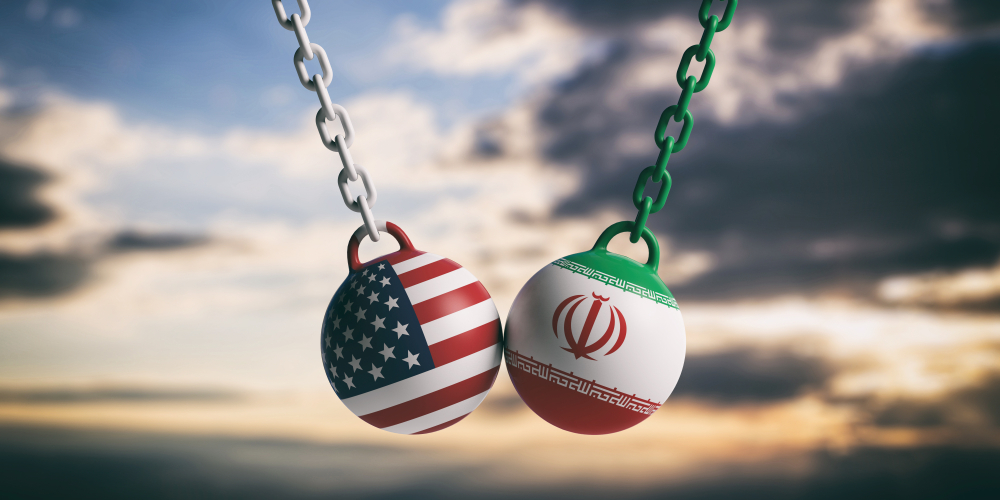by Jon B. Wolfsthal
It would be a lot easier to know what is going to happen in the Middle East if President’ Trump’s goals and objectives could be determined with respect to Iran. Not knowing what he wants, and how he intends to achieve it, makes knowing what decisions he might make at any given moment, or where his hawkish national security team might lead him, harder to predict.
Of course, the United States is right to condemn the shooting down of a surveillance drone over international waters, just as any U.S. military actions against Iran for anything other than immediate self-defense should be condemned. The prospect that other drones may have violated Iranian in the past is a related but not determinative issue. Yet, beneath all of the growing concern about a military attack by both states, neither country likely wants a military clash or would strategically benefit from such a conflict. If this is true, and a conflict through miscalculation or escalation is to be avoided, leaders in both Iran and the United States need to take deliberate steps to avoid such an outcome.
President Trump initially tweeted that “Iran made a very big mistake,” suggesting a military attack was coming in response. He later told reporters that he believes a lower-level Iranian commander probably made a mistake and signaled that he might not respond militarily. Such confusion leads to the escalation of conflicts, and quickly.
If indeed Trump wants to avoid another Middle East war, he needs to direct the U.S. military to exercise caution and avoid any military operations that could be considered a provocation near Iran’s border. Just as President Kennedy, at the height of the Cuban Missile Crisis, ordered U.S. military units to avoid any perceived provocations against the Soviet Union, President Trump should direct the U.S. Central Command to reduce surveillance flights and pull back from any incursions of Iranian airspace— if in fact, the president wants to pull back from the brink. He cannot assume—as he said in the Oval Office on Thursday—that things will just work out. Therefore, in addition, flight patterns of all U.S. aircraft including drones should be altered so that they do not approach Iranian borders in ways that Iran could interpret as threatening. Messages—public or private—need to be sent that the United States is not afraid of a fight but is also not looking for one.
Iran, for its part, also needs to pull back and make clear that it will not interfere in any way with legal international shipping in the Persian Gulf or the Strait of Hormuz. Beyond this, both sides need to establish dedicated channels of communications between military commanders to establish clearer rules of engagement and to address steps the other is taking or has taken that could lead to a conflict. The United States has such links with Russia and other adversaries with whom our militaries might come into contact.
Yet, the United States and Iran do not have established communication channels or a means to talk quickly and reliably should an incident take place. Should ships collide, airplanes stray off course, or some other unanticipated interaction between our forced take place, the two countries don’t have a clear playbook in place to avoid a conflict. Now would seem like a good time to set one up. President Trump claims that he wants to bring Iran to the negotiating table. This would be a way to test that prospect and see where it leads.
If both sides want a conflict, there will be ample opportunities to find some incident or offense to start one. But if both leaders want to avoid a conflict, they have to work for it and create the appropriate off-ramps. Political actors and pundits will debate who blinked and who stood strong, but avoiding a war requires some actual leadership. With so much to lose, it would seem a good time for the United States to start showing it.
That might be a bridge too far for President Trump’s national security advisor and secretary of state, who are keen on talking tough and are increasingly painting Trump into a corner. But if the president wants to avoid another Middle East war, he’d better make sure his team knows what he wants and direct his advisors to keep the lid on this powder keg.
Jon Wolfsthal is the Director of the Nuclear Crisis Group and a Senior Advisor to Global Zero. He is a former Senior Director at the National Security Council.






A war with Iran is unavoidable should its leaders restart its nuclear industry to facilitate the development of a bomb. Without the use of ground forces, the U.S. could convert Iranian nuclear facilities into rubble. The off ramp could be the decision of the U.S. to purchase Iranian refined nuclear product for use to generate electricity worldwide.
Along the same line, European nations could discourage the development of Iranian based rocketry by facilitating the development of joint ventures, transferring rocket technology and fabrication out of the country, and on to alternative, existing European facilities. Not only would peaceful pursuits be facilitated, but expenditures for military research, and hardware, could be diverted to productive civilian needs.
The way to avoid a military conflict with Iran is to help Iranian people bring the Islamo-Fascist regime in Tehran down. They will then decide in a free a fair and internationally supervised referendum what kind of secular political regime will be best for them moving forward. Iran will become a normal country with a normal government dealing with normal issues.
Please stop suggesting appeasing methods that only suits the Iranian regime. Iranians by and large and especially the youth of the country want regime change now.